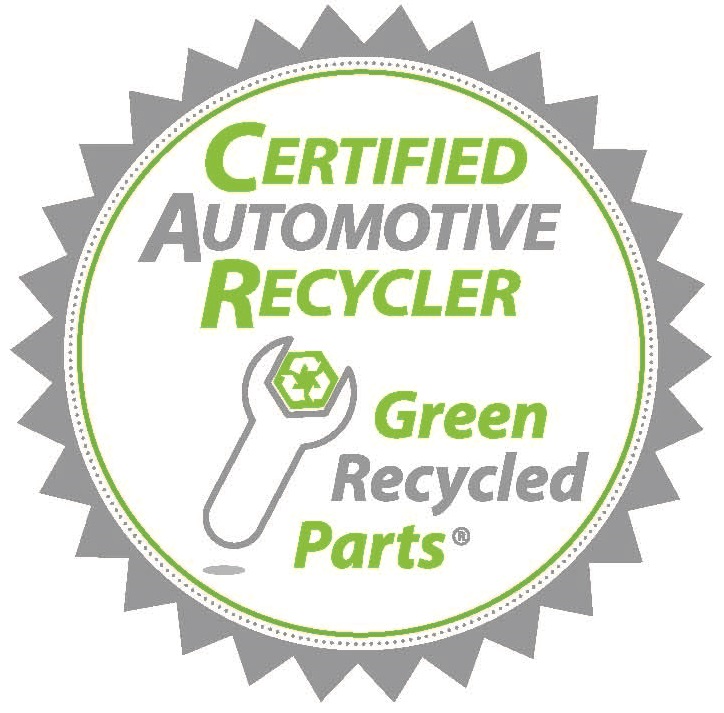While we have tried to present a summary of the essential information on this topic, you should be aware that other items, such as local regulations, may apply to you. Please read the disclaimer.
What You Need to Know
In the 1970s, atmospheric chemists discovered that refrigerants released into the atmosphere can have a devastating effect on the ozone layer. A small amount of ozone-depleting refrigerant has the potential to destroy a large amount of ozone through a chain reaction. Stratospheric ozone depletion allows harmful ultraviolet rays from the sun to reach the earth’s surface, which increases the risk of skin cancer and cataracts from increased UV exposure.
As a result, refrigerants including CFCs and HCFCs are now tightly regulated. Refrigerant recovery must be done with the use of EPA-certified recovery equipment, by certified technicians, and must be handled and recycled properly. The used filters from the operation must be treated as a hazardous waste. You also need to keep records.
Chemical substitutes for CFCs and HCFCs known as hydrofluorocarbons (HFC) do not deplete the ozone layer but instead are high global warming potential gases which contribute to climate change. Similar to CFCs and HCFCs, HFCs have to be recovered and cannot be vented.
Regulations
Refrigerants (Freon, R-12 and R-134a) are the chemicals used in motor vehicle air conditioning (MVAC). By the end of 1995, EPA banned production and import of R-12. However, the use of R-12 is still permitted until supplies are depleted. Federal regulations state that it is illegal to vent any refrigerant to the environment during repair, service, maintenance, recycling or disposal of refrigeration and air conditioning equipment.
Refrigerants must be recovered during all service, repair, maintenance and disposal activities.
• Recovery - removing refrigerant from air conditioning units and storing it in a container without testing or processing it; or
Recovery - removing refrigerant from air conditioning units and storing it in a container without testing or processing it; or
• Reclaiming - processing refrigerant, usually by distillation, until all impurities are removed and meets virgin specifications.
Reclaiming - processing refrigerant, usually by distillation, until all impurities are removed and meets virgin specifications.
Spent refrigerants that are not reclaimed or recycled are regulated wastes. EPA requires use of EPA-certified refrigerant recycling equipment when servicing motor vehicle air conditioners. Anyone who works on vehicle air conditioning systems must also be certified by an EPA-approved organization. Each facility must either have a certified person on-site or bring in a person certified to perform any service involving refrigerant, including but not limited to refrigerant top-offs. For additional information, see http://www.epa.gov/ozone/title6/609/technicians/609certs.html
Refrigerant Recovery. The rules for recovery depend on whether the refrigerant will be sent off-site to a reclamation facility or to a MVAC service center for reuse without prior reclamation.
If the refrigerant will be sent off-site to a reclamation facility, then refrigerant must be recovered using MVAC recovery only equipment certified to SAE J1732 or J2810. There is no restriction on who performs the recovery. That person does not need to be a certified technician. http://www.epa.gov/Ozone/title6/608/608fact.html#equipcert
If the refrigerant will be sent to an MVAC service facility for charging or recharging into an MVAC or MVAC-like appliance without prior reclamation, then the same rule applies, but there is a further restriction. Prior to such charging or recharging, the refrigerant must be recovered using approved refrigerant recycling equipment dedicated for use with MVACs and MVAC-like appliances. The recovery process must be performed either by a certified technician.
Storage of Refrigerant. Store refrigerant in tanks that meet the federal Department of Transportation (DOT) or Underwriters Laboratory (UL) standards. The tanks should be labeled “Refrigerants.”
Sale of Refrigerant. The rules for sale of refrigerant depend on whether the refrigerant will be sent off-site to a reclamation facility or to a MVAC service center for reuse without prior reclamation.
If the refrigerant will be sent off-site to a reclamation facility, then it can be sent to facilities that meet EPA standards for reclaiming refrigerants or those that buy used refrigerant for transfer to the EPA-certified reclaimers.
Recordkeeping and Reporting. The following are recordkeeping and reporting requirements related to recovery, and sale of refrigerant:
• Anyone who recovers refrigerant from MVACs or MVAC-like appliances for purposes of disposal must obtain and properly use refrigerant recovery equipment that has been certified for use with motor vehicle air conditioners. The owner of the refrigerant recovery equipment must send a certification form to the appropriate EPA Region. A sample form can be found at http://www.epa.gov/ozone/title6/608/recoveryform.pdf.
Anyone who recovers refrigerant from MVACs or MVAC-like appliances for purposes of disposal must obtain and properly use refrigerant recovery equipment that has been certified for use with motor vehicle air conditioners. The owner of the refrigerant recovery equipment must send a certification form to the appropriate EPA Region. A sample form can be found at http://www.epa.gov/ozone/title6/608/recoveryform.pdf.
• Anyone accepting MVACs for disposal must insure that the refrigerant has been properly removed before disposal by, (1) recovering the refrigerant at your facility or (2) obtaining a written signed statement from your customer verifying thtat the refrigerant ahs been properly recovered from all motor vehicle air conditioners prior to delivery to your facility. Records of recovery must be maintained for 3 years.
Anyone accepting MVACs for disposal must insure that the refrigerant has been properly removed before disposal by, (1) recovering the refrigerant at your facility or (2) obtaining a written signed statement from your customer verifying thtat the refrigerant ahs been properly recovered from all motor vehicle air conditioners prior to delivery to your facility. Records of recovery must be maintained for 3 years.
• Anyone who sells or distributes ozone-depleting refrigerant must retain invoices for at least three years that indicate the name of the purchaser, the date of sale, and the quantity of refrigerant purchased. A sample form can be found at http://www.epa.gov/ozone/title6/608/sales/sales.html
Anyone who sells or distributes ozone-depleting refrigerant must retain invoices for at least three years that indicate the name of the purchaser, the date of sale, and the quantity of refrigerant purchased. A sample form can be found at http://www.epa.gov/ozone/title6/608/sales/sales.html
Self-Audit Checklist
Use the following list to audit your procedures for refrigerant/CFC management.
1. If the refrigerant will be sent off-site to a reclamation facility, verify that:
If the refrigerant will be sent off-site to a reclamation facility, verify that:
- The refrigerant was recovered using MVAC recovery only equipment certified to SAE J1732 or J2810.
- A section 609 certification form has been completed for the recovery equipment.
- The refrigerant was sold to facilities that meet EPA standards for reclaiming refrigerants or to a company that buys used refrigerant for resell to reclaiming companies.
- You have retained invoices that indicate the name of the purchaser, the date of sale, and the quantity of refrigerant purchased.
2. If the refrigerant will be sent to an MVAC service facility for charging or recharging into an MVAC or MVAC-like appliance without prior reclamation, verify that:
If the refrigerant will be sent to an MVAC service facility for charging or recharging into an MVAC or MVAC-like appliance without prior reclamation, verify that:
- The refrigerant was recovered using MVAC recovery only equipment certified to SAE J1732 or J2810.
- A section 609 certification form has been completed for the refrigerant handling equipment.
- The refrigerant was sold to facilities that meet EPA standards for reclaiming refrigerants or those that buy used refrigerant to resell to the reclaiming operations.
Best Management Practices (BMPs)
Most regulations tell you what you have to do to be in compliance, but they don’t explain how to do it. That’s where "best management practices" come into play. BMPs are methods that help you to get into compliance and stay there. The following BMPs are recommended for management and recycle of refrigerant/CFCs:
- Use only EPA approved refrigerant handling machines when recharging or removing refrigerants.
- Recover refrigerants prior to crushing and dismantling vehicles.
- Verify that all vehicles entering the facility without refrigerant have had the refrigerant removed using proper methods.
- Employ certified technicians for refrigerant recovery.
- Avoid mixing R-12 and R-134a because contaminated refrigerant cannot be put back into the vehicle and must be sent to a recycling facility.
- Do not use alternative refrigerants containing liquefied petroleum (LP).
- These refrigerants not only cause contamination, but pose a safety risk due to their flammability.
- Be sure to use the proper O-rings, lubricants, etc. when retrofitting MVACs.
- Don’t allow R-12 to mix with oil prior to reclamation or recycling.
- Sell refrigerant to certified technicians or to certified reclamation facilities that will reclaim the refrigerant to its original purity specifications.
- Dispose of filters from CFC recapture as hazardous waste.
- Keep accurate records for at least 3 years.
Related ECAR Fact Sheets
none
ECAR Fact Sheet Puerto Rico REFRIGERANT
Fact Sheet Status and Disclaimer
The following compliance assistance information for the state is subject to all of the warranties and disclaimers associated with this internet website [Read full disclaimer]. Please note that this information has been submitted or will be submitted to the state agencies responsible for implementing environmental laws and regulations for their review and comment. This note is provided only for your informational purposes and does not change or alter any warranties or disclaimers, including, for example, your responsibility to seek appropriate legal or technical assistance to interpret the state's laws as needed.
The fact sheets are designed to assist automotive recyclers with operating their businesses and managing their wastes in compliance with the environmental laws in Iowa. ECAR tries to provides timely and essential information on this topic, but be aware that other items, such as local regulations and recent changes, may apply. Read the Disclaimer. To view other Puerto Rico FACT SHEETS return to the ECAR Virtual Tour.




